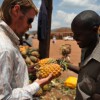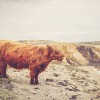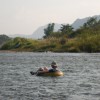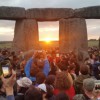As part of my overland journey from India to Egypt, I would take the opportunity to visit and explore Syria, which in 2009 was stable and peaceful. My Belgium travelling companion (who I’d first met while travelling in Iran) Catherine and I crossed the Syrian Turkey border near the Turkish city of Kilis. On account of New Zealand having no Syrian Embassy, I would need to get a visa at the border which was relatively painless; except for the USD $60 fee of course! However, once we’d be documented and cleared we continued on via taxi van to Aleppo where I would stay in the smallest room I have to date during my travels; swinging a cat would literally be impossible in there!
Before the Syrian Civil War, Aleppo was the largest city in Syria and one of the largest in the Levant. Aleppo is a fairly conservative city but a fascinating one. Like a lot of Middle Eastern towns/cities, central Aleppo is dominated by its citadel (a fort atop a man-made hill surrounded by a moat) which like many citadels in the region was built in the early 12th century AD, shortly after the Crusaders rolled into ‘the holy lands’ on the back of the popes orders. Of course the advent of gunpowder was the beginning of the end for forts and their military supremacy.
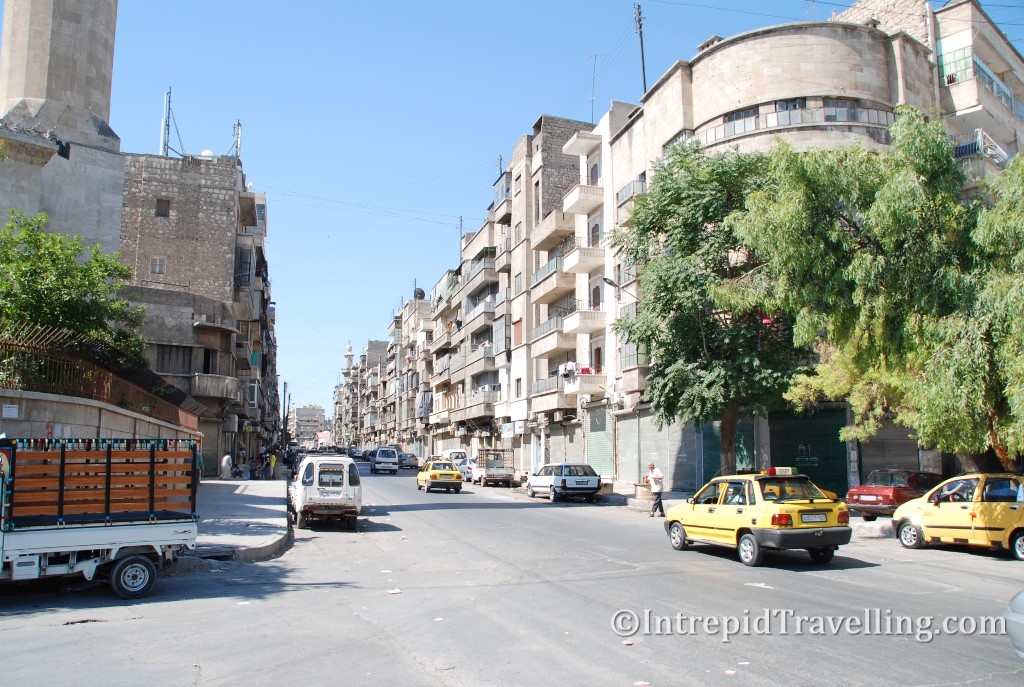
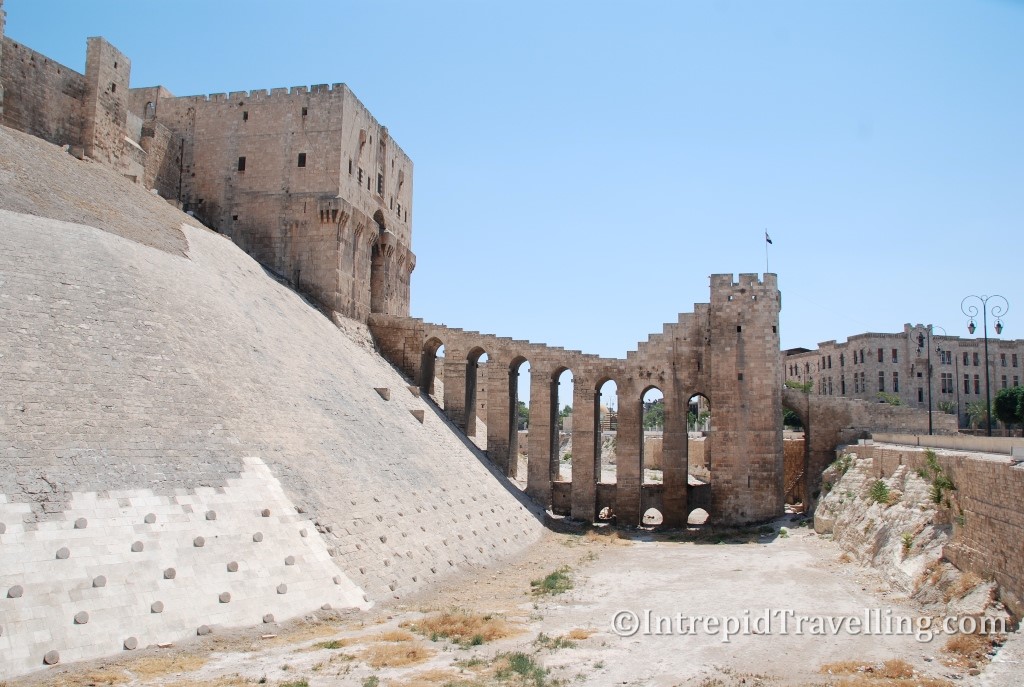
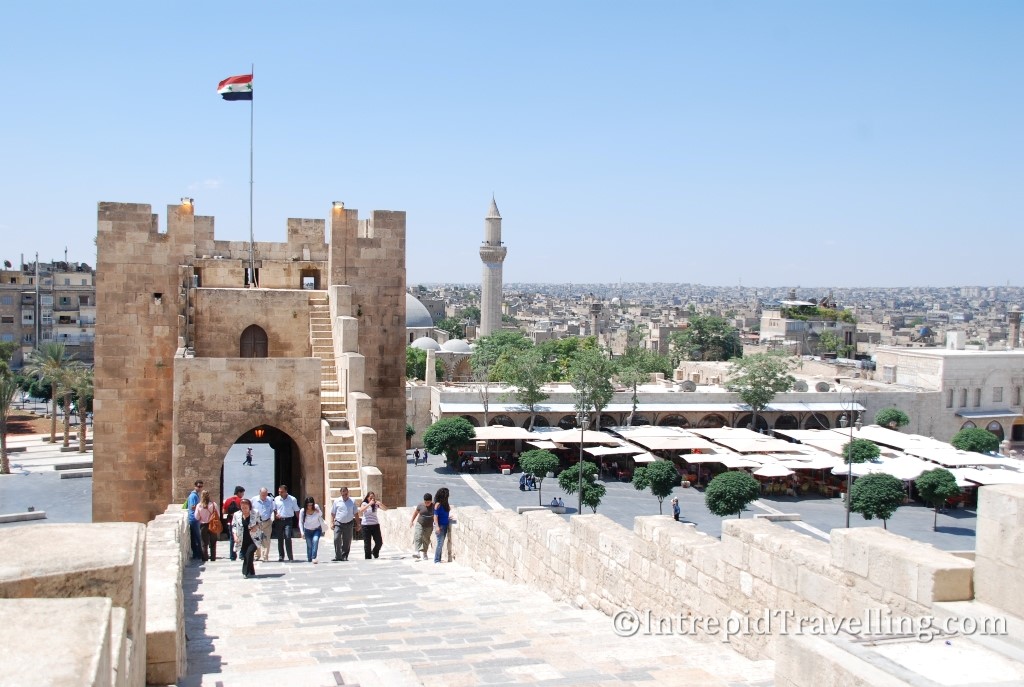
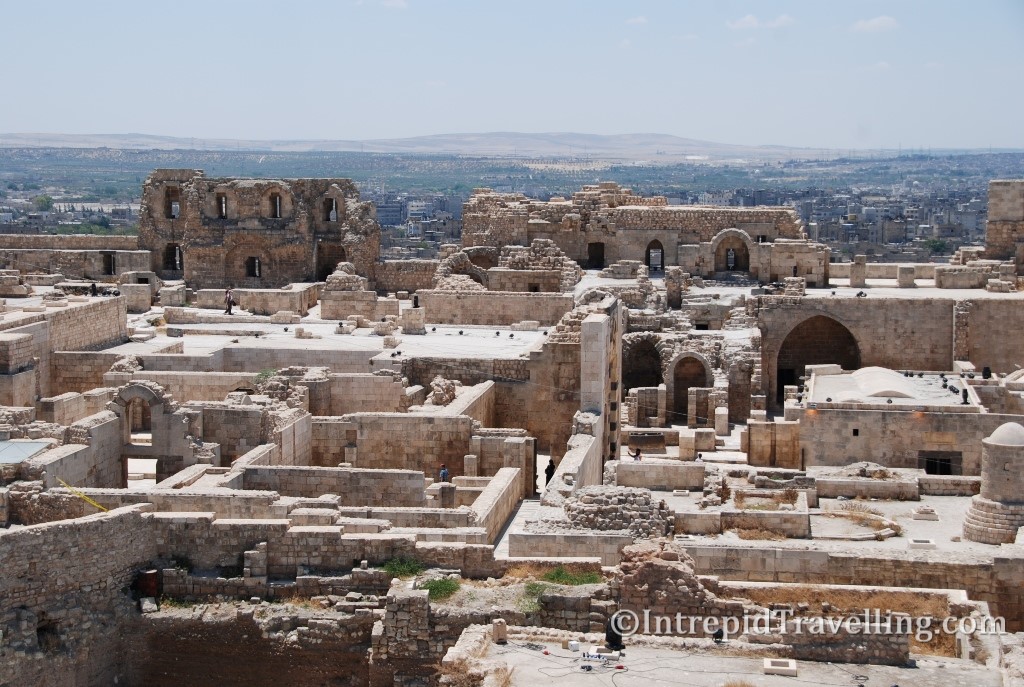
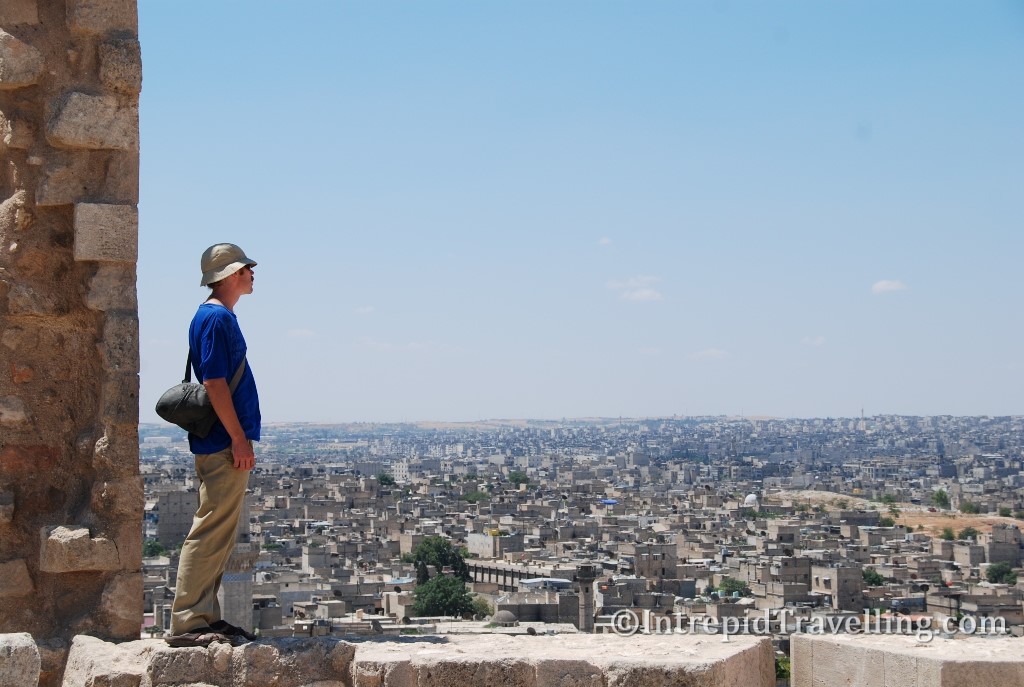
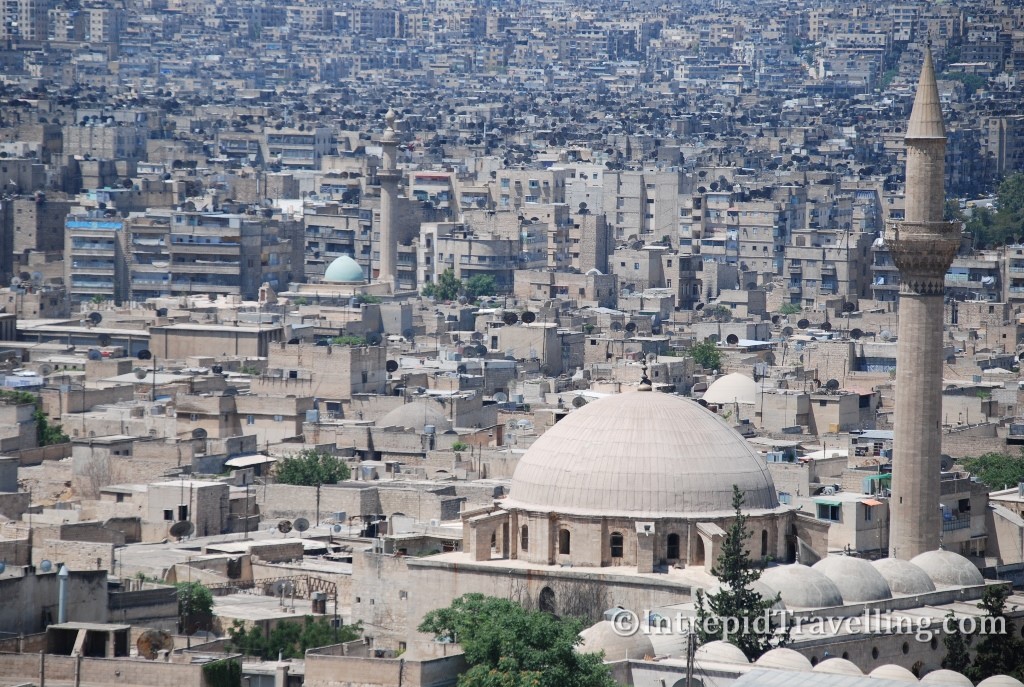
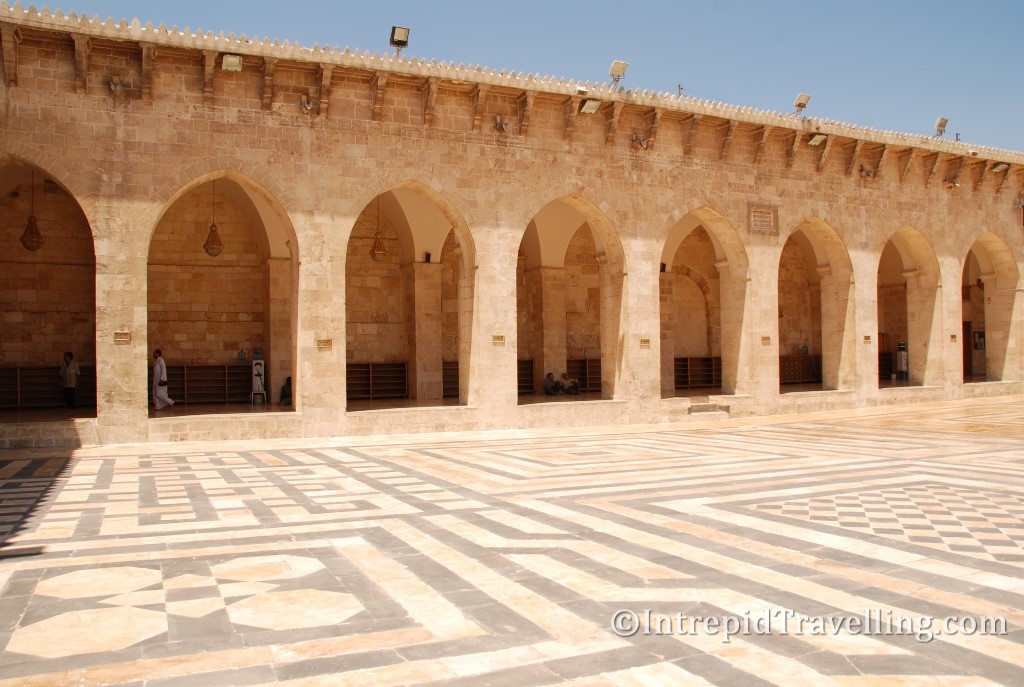
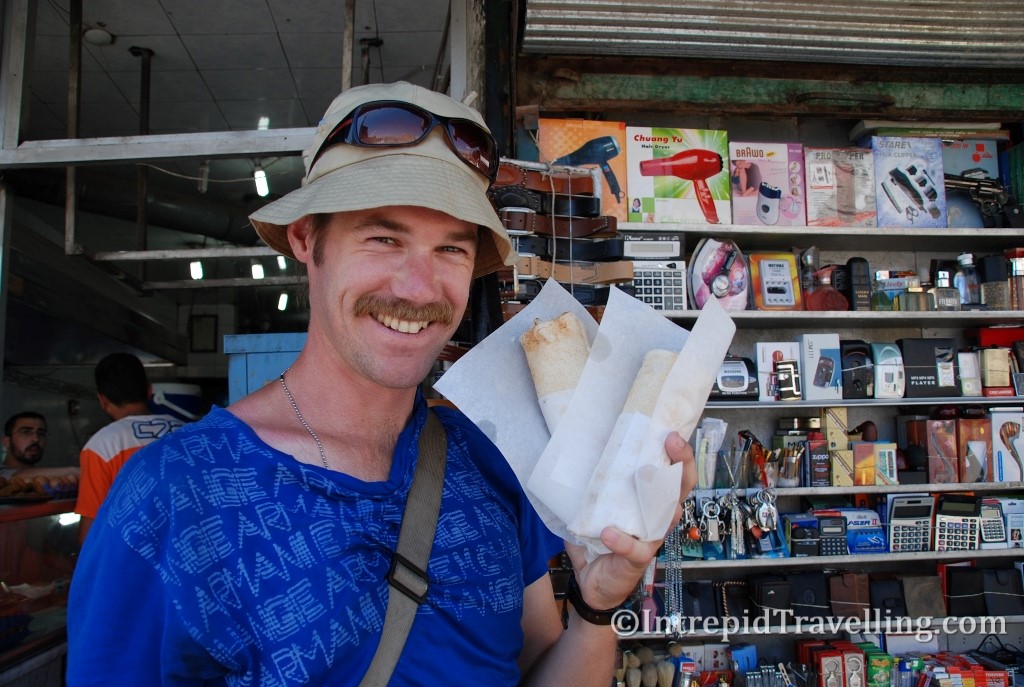
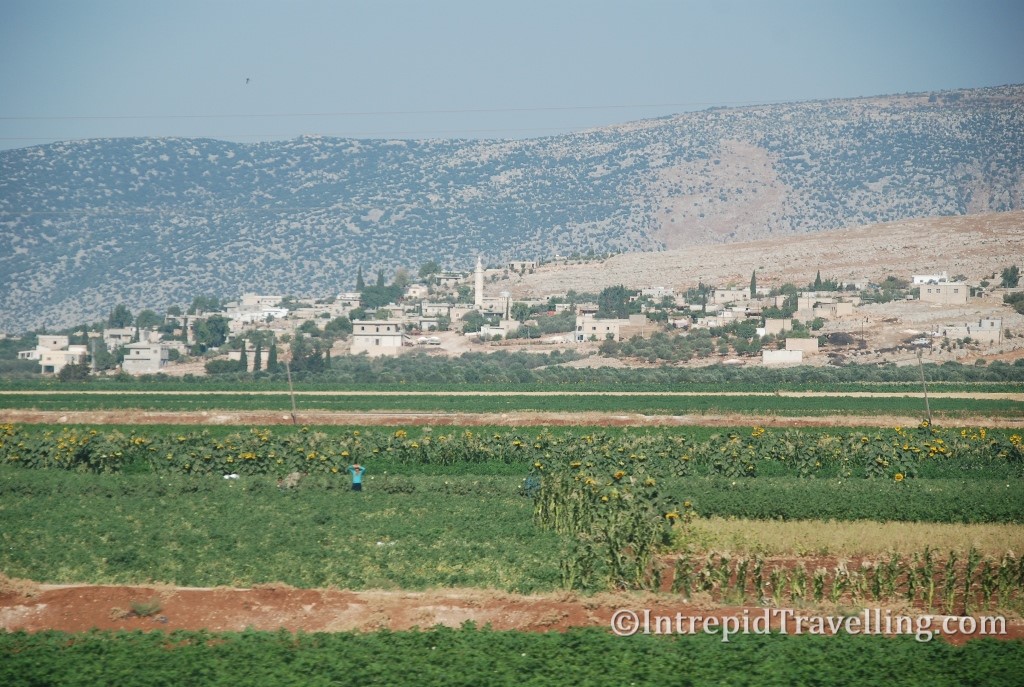
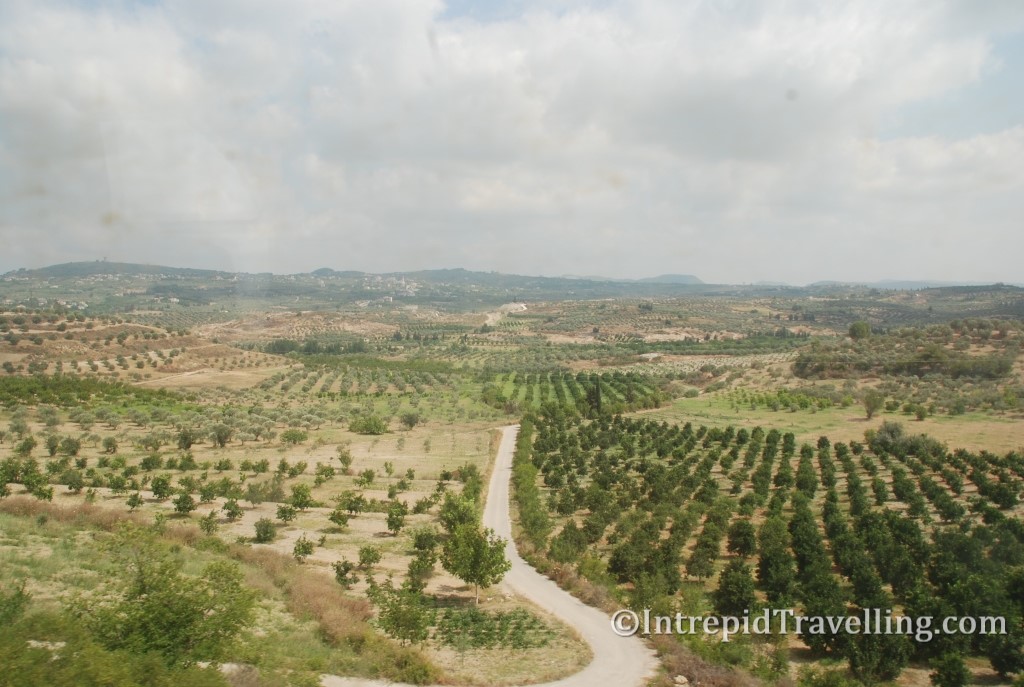
In case you didn’t already know, I love kebabs, doners, chicken wraps, shawarmas; call them what you will, but the Middle East is home to them all. In fact, I wouldn’t have been surprised that if the former USSR had taken over this region, that they would have called it Kebabistan; my Holy land. To boot they’re inexpensive in Syria so I love meals times here.
Catherine informed me that Aleppo was very famous for its olive oil soap. The factory we would visit produces there soap only three months a year; probably a simple seasonal olive supply issue. So not wanting to miss the opportunity to visit such a unique place, we made our way to the age old Al Joubaili Soap Factory which is a stone’s throw from the cities Citadel. The visit and simple tour was brilliant, it oozes an authentic rustic character. We would learn the factory still produces soaps the traditional way using olive oil and bay laurel (an aromatic evergreen leaf). The aroma of the drying soaps are amazing, so be sure to buy some for gifts.
Other attractions in Aleppo you must see, if they still exist today, are any of the many souqs, the Birmaristan Arghan museum, Saint Simeon’s basilica and The Great Mosque which is the largest and most ornate mosque in Aleppo.
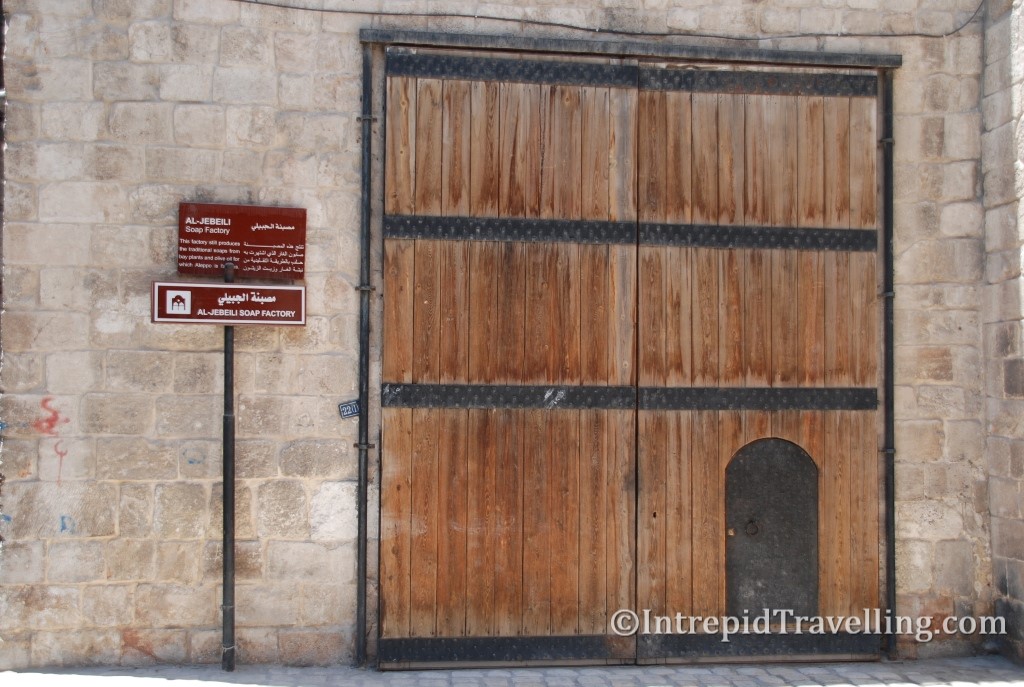
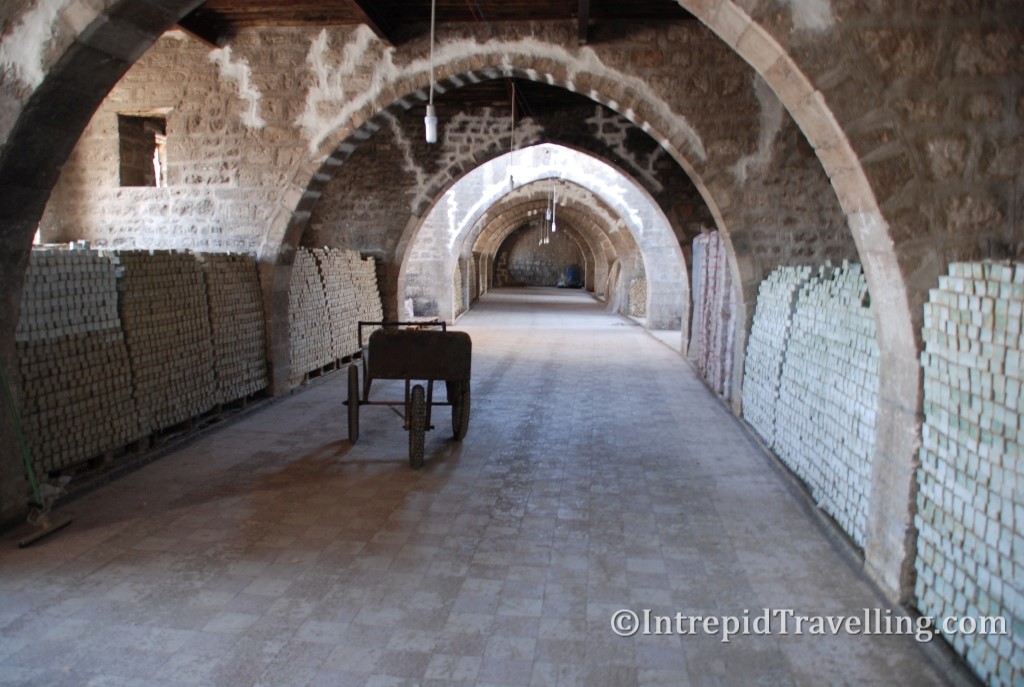
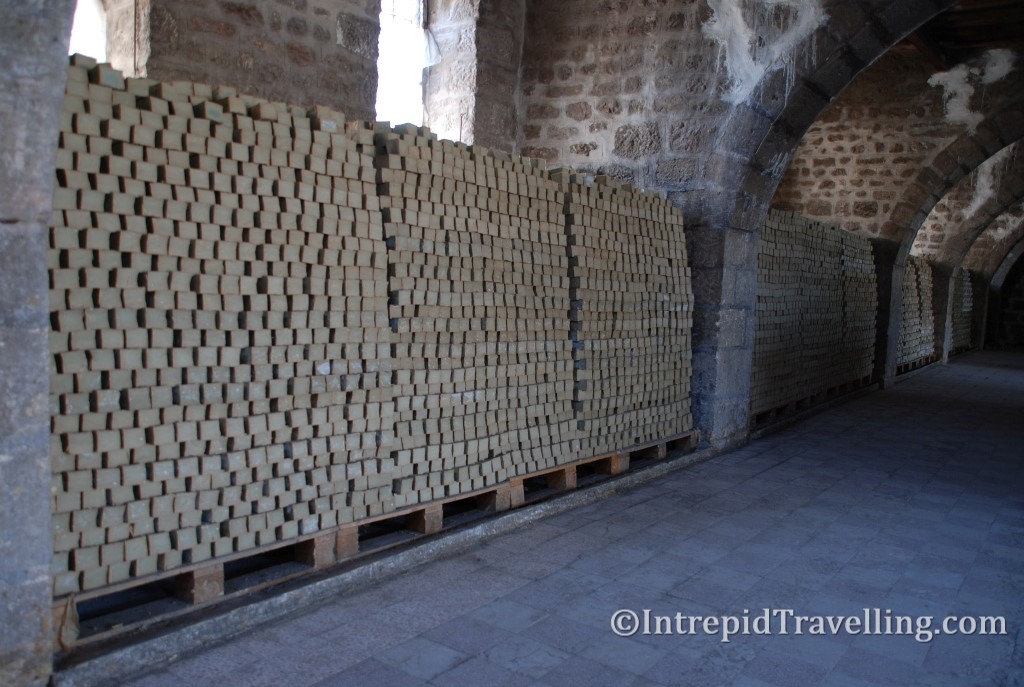
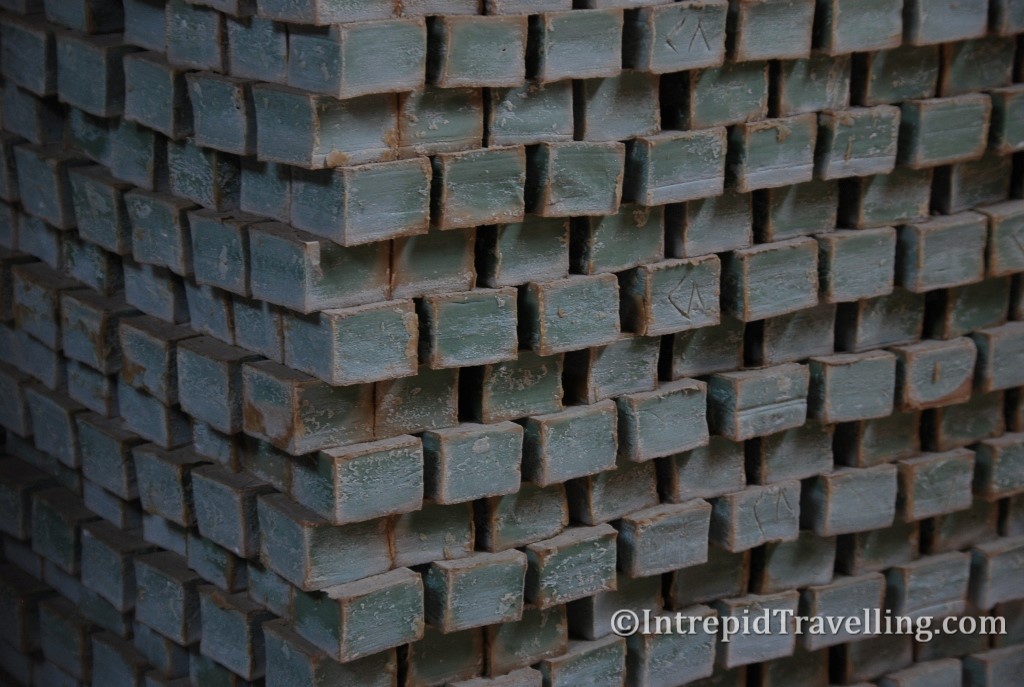
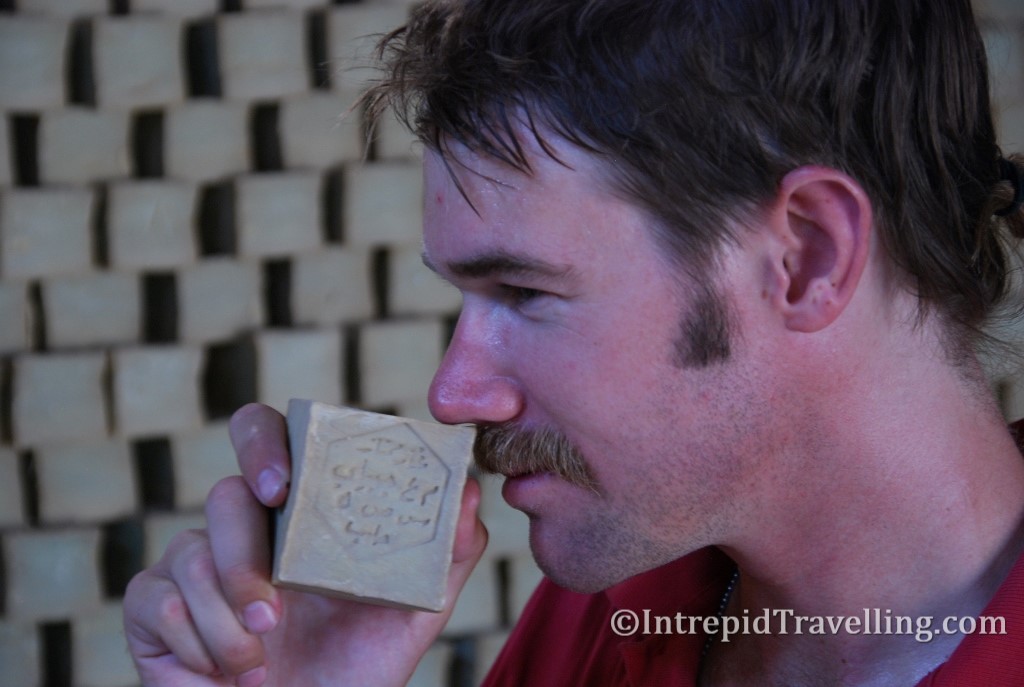
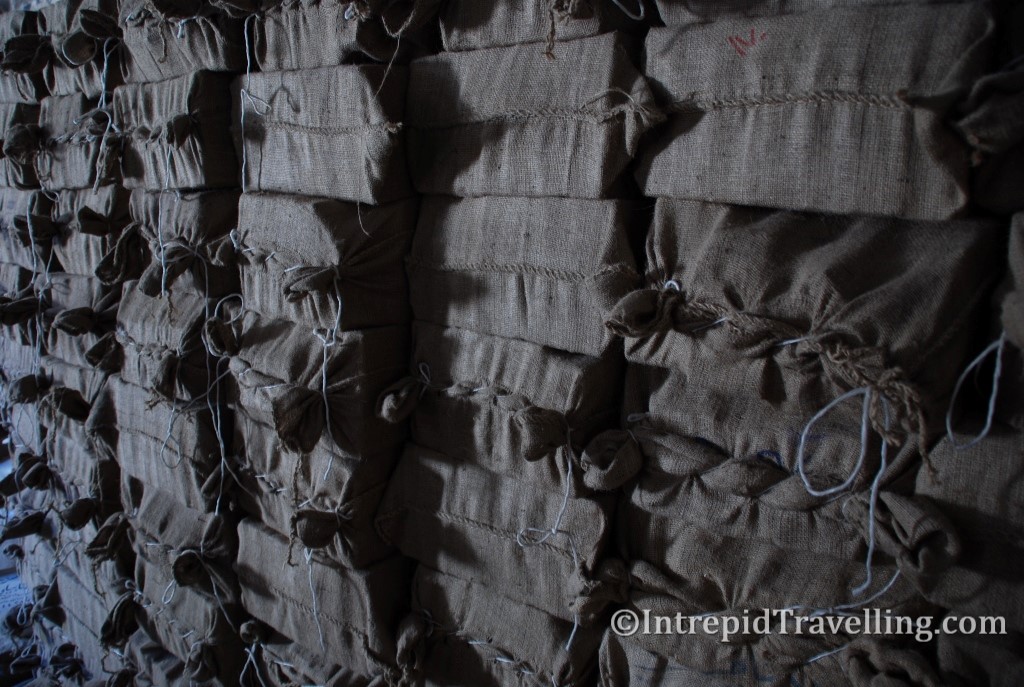
From Aleppo we took the three and a half hour scenic train ride to the Syrian Mediterranean city of Latakia. A 1st class seat cost 70 Syrian pounds, about USD $1.55 or approximately insane value; a strong contender for the “Best Value” award of my entire around the world trip. The coastal areas of Syria are pretty green, and the scenery reminded Catherine a lot of the South of France e.g. no shortage of olive trees, cedar trees (famous in nearby Lebanon) and cropland. Latakia city turned out to be nothing special; the only thing of interest that happened was seeing what must be one of the world’s largest doners!
From Latakia we’d take a local bus to the small inland city of Hama. Hama’s main, and some say only, tourist attraction is its old water wheels (norias) that ingeniously use the streams current to raise water some 20 meters to small aqueducts for local irrigation. Before the recent advent of the electric pump they were doing this for at least the last 2,000 years. Again, if they haven’t been destroyed by the Civil War they’re an amazing relic from the ancient past. While in Hama we’d see large banners of the Syrian President, and from what I gathered, Syria is meant to be democracy, but the same guy and now his son gets re-elected every time with 99.9% of the vote which sounds a little suspicious... Either way, you used to see their image at every turn, and it seemed Bashar Assad was doing a pretty decent job. Looks can be deceiving though of course as we’ve since discovered.
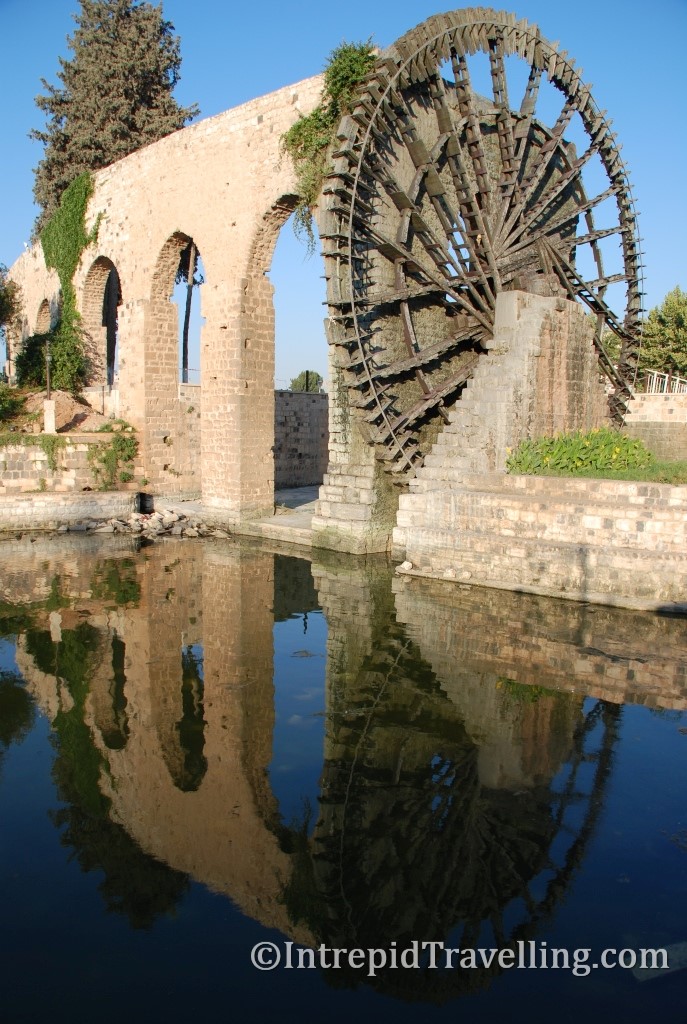
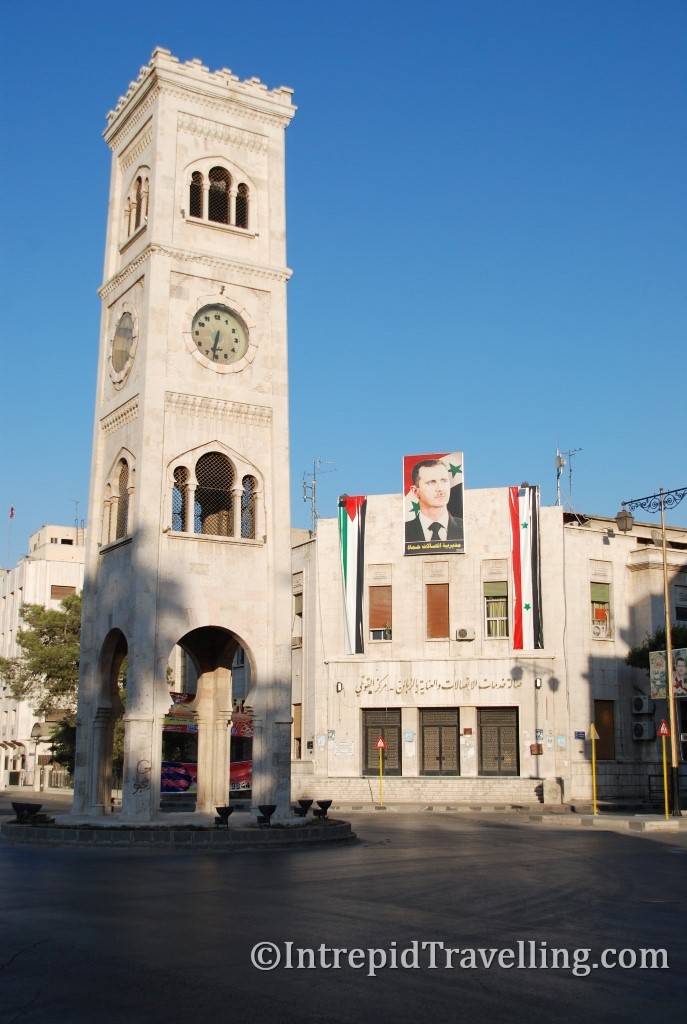
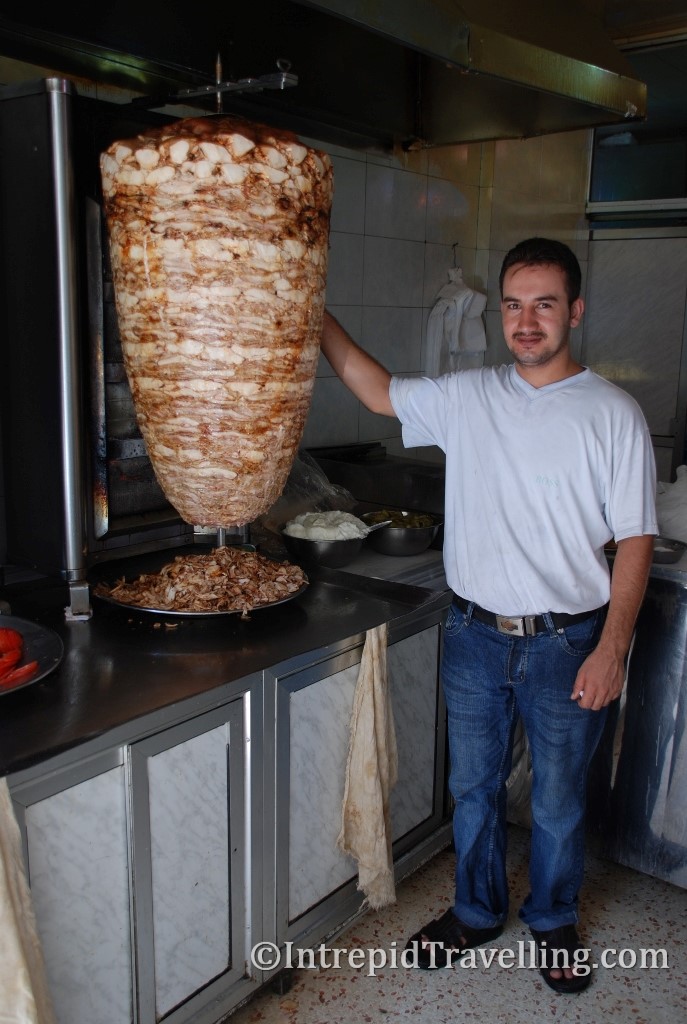
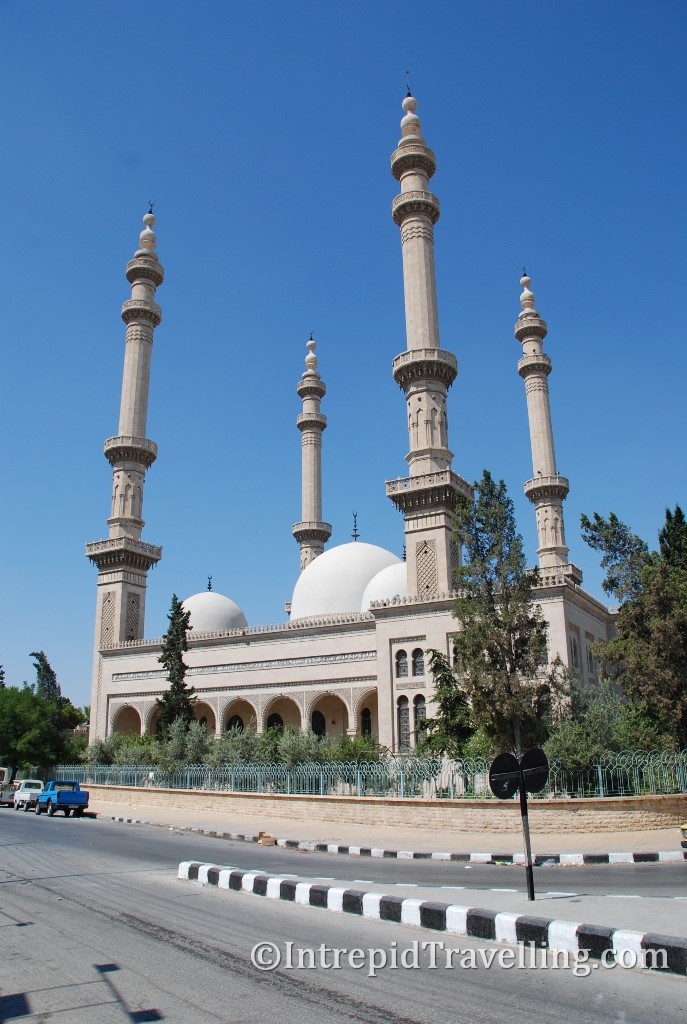
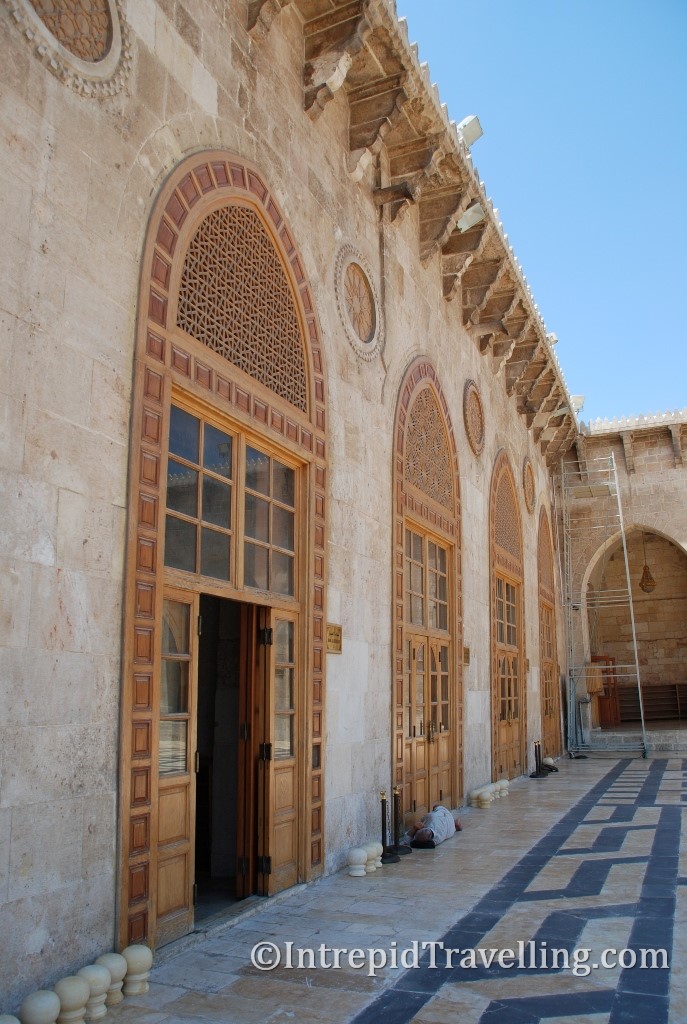
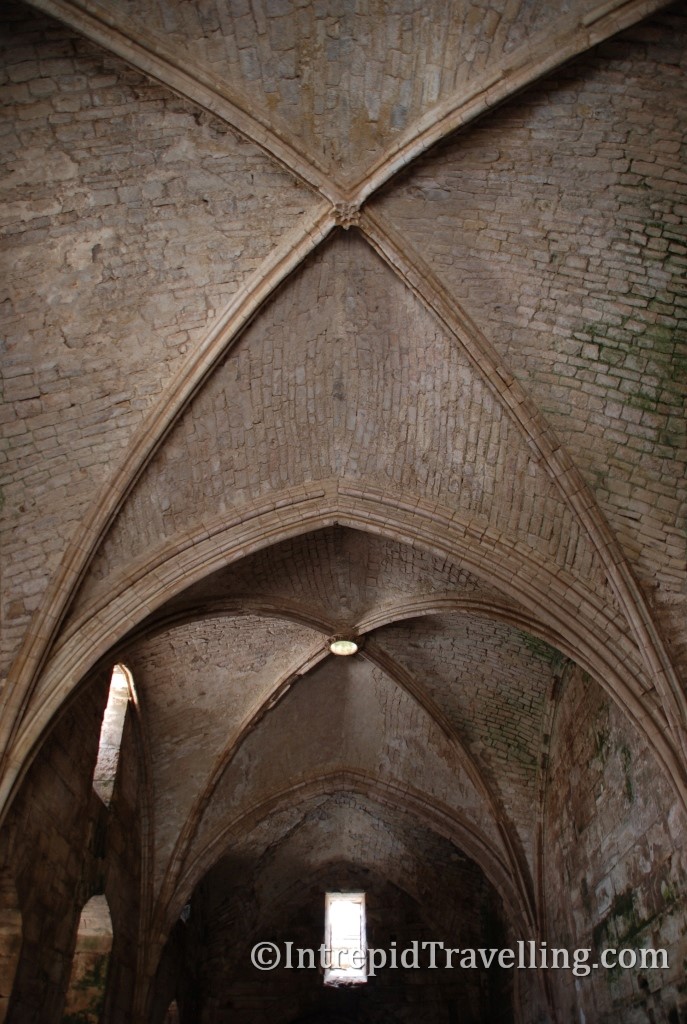
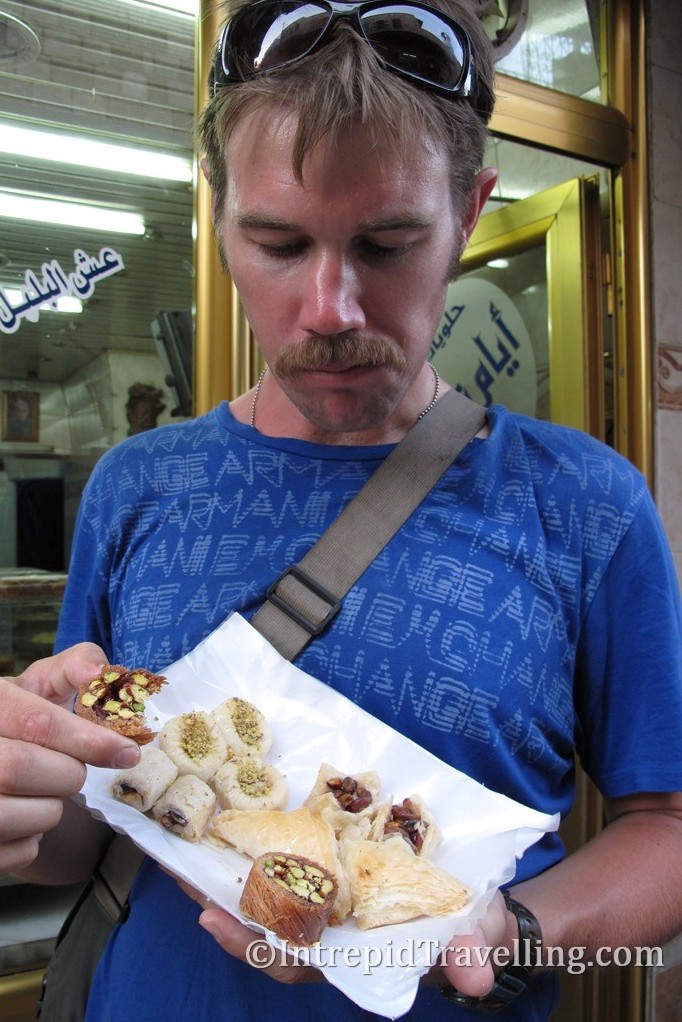
From Hama, and a couple of minivan rides away, is the must see Crac des Chevalier which is arguably the finest castle in the world. One of many Crusader castles built back in the early 12th century; it has survived to the present day relatively intact. Rivaling the exterior look is the internal masonry work, especially the arches and domed roofs, all made from hand worked stone and designed to support itself for some 900 years and counting. As the book says, “it’s one of Syria’s must-see sights”.
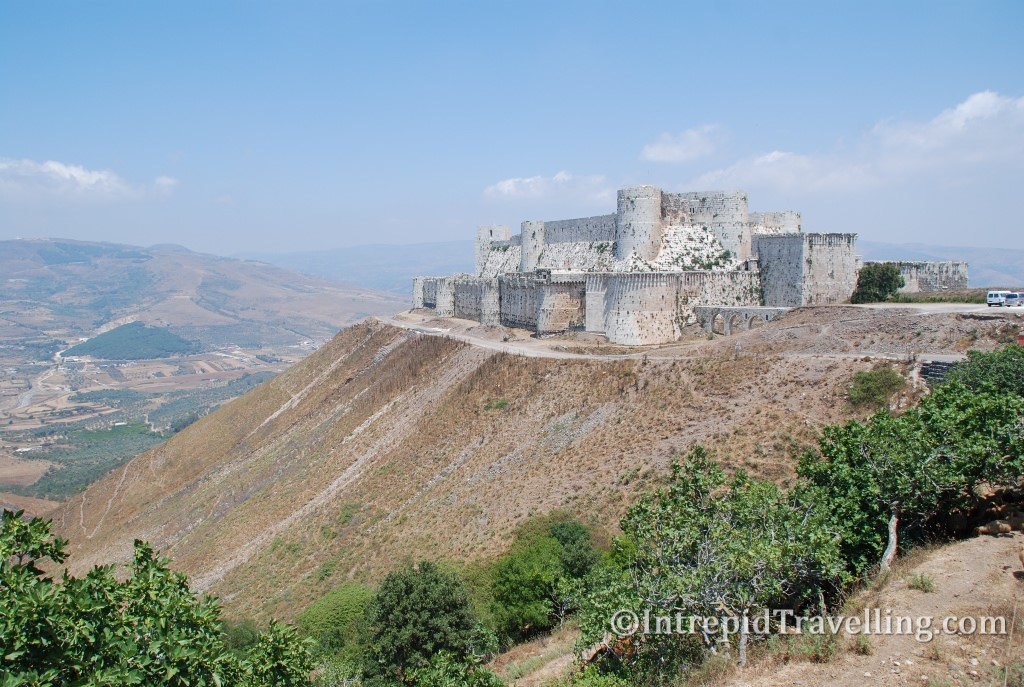
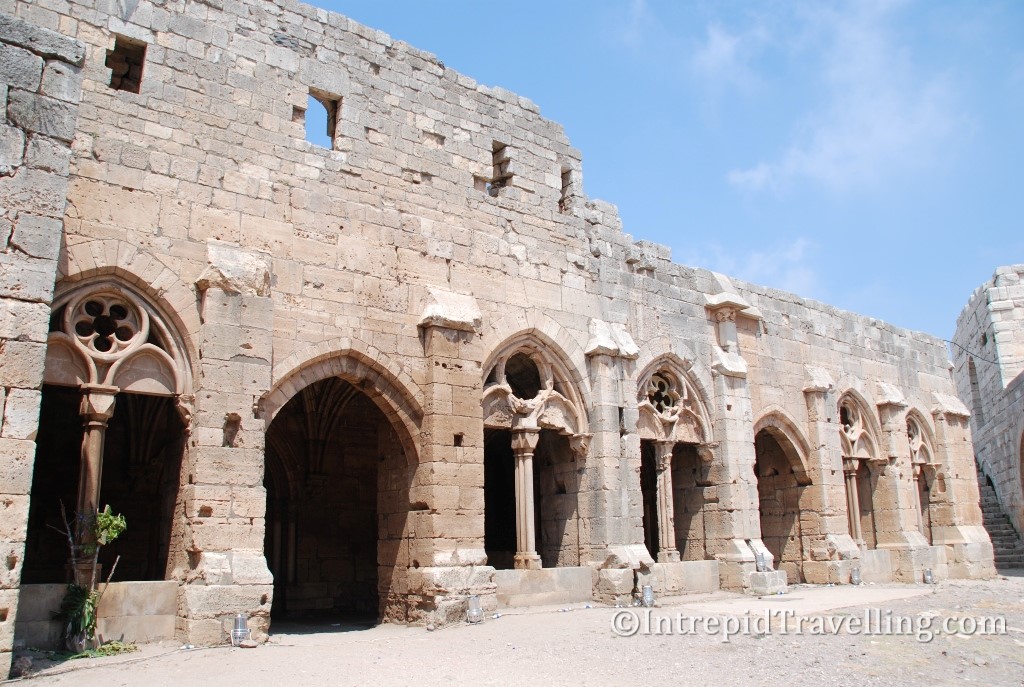
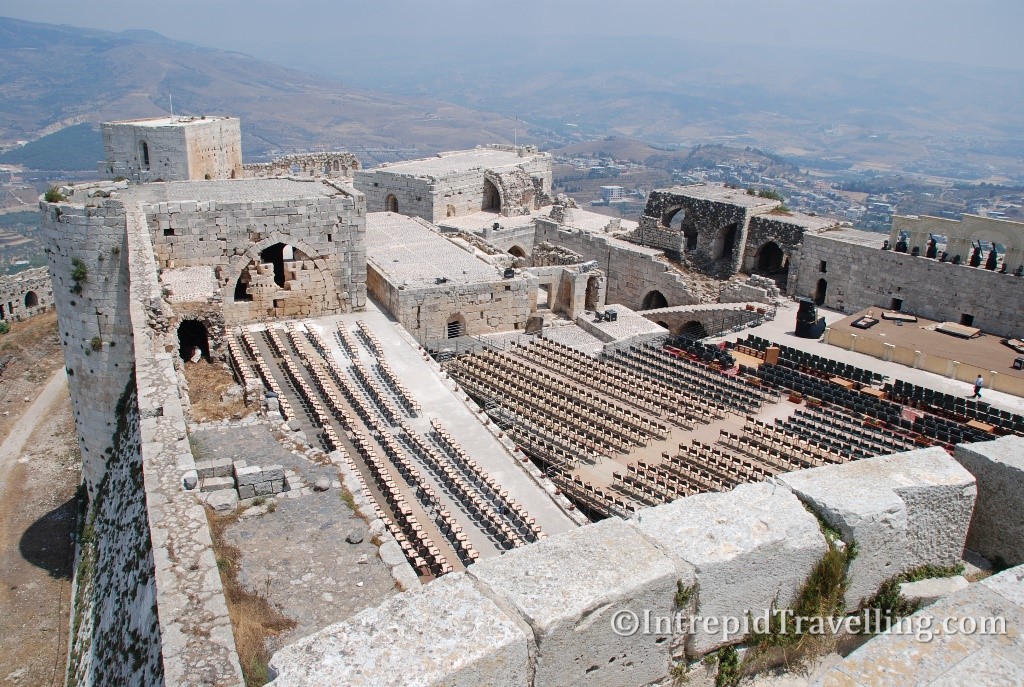
It’s so sad to see what has happened to Syria since I visited in 2009. Firstly to its poor inhabitants who have lost so much, but also to the country itself; I imagine it’ll likely take decades to recover, and even then, will likely never be the same. I feel blessed I had the good fortune to experience such a magnificent country before its self destruction.

